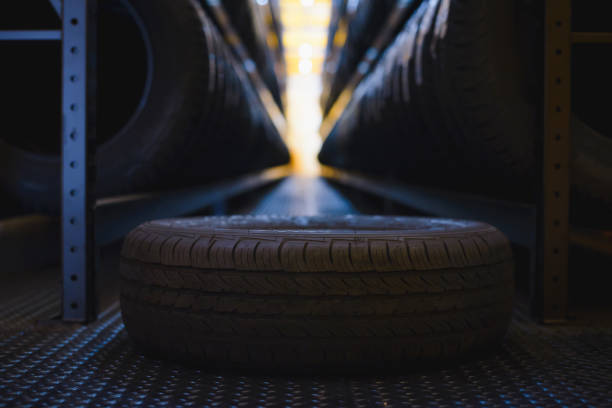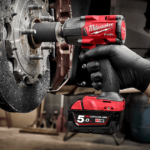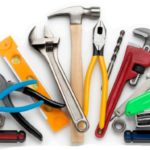What are Dolly Tires?
Dolly tires, also known as caster wheels or trailer tires, are specialized tires designed for use on dollies, hand trucks, and other small-wheeled equipment used for moving heavy loads. These tires are typically smaller in size compared to vehicle tires and are engineered to handle the unique demands of dolly applications.
The primary purpose of dolly tires is to facilitate the smooth and efficient movement of heavy objects over various surfaces, such as concrete floors, asphalt, or even rough terrain. They are commonly used in warehouses, construction sites, manufacturing facilities, and anywhere where the transportation of bulky or heavy items is required.
Dolly tires come in various types, each suited for different applications and load capacities. Some common types include:
- Solid Rubber Dolly Tires: These tires are made of solid rubber and are known for their durability and resistance to punctures. They are often used in harsh environments where sharp objects or debris may be present.
- Pneumatic (Air-Filled) Dolly Tires: These tires are similar to traditional vehicle tires, with an air-filled inner tube or pneumatic construction. They provide better cushioning and shock absorption, making them suitable for smoother surfaces and longer distances.
- Semi-Pneumatic Dolly Tires: These tires combine the benefits of solid rubber and pneumatic tires. They feature a solid rubber core with a pneumatic tread, offering a balance between durability and cushioning.
Dolly tires are designed to be used on various types of dollies, including hand trucks, platform trucks, furniture dollies, and appliance dollies, among others. They play a crucial role in ensuring safe and efficient material handling operations, reducing the risk of injury and minimizing potential damage to floors or the cargo being transported.
Table of Contents
Design and Construction
Dolly tires are engineered to withstand the rigorous demands of towing and hauling heavy loads. The construction typically features a bias-ply or radial design with reinforced sidewalls for added durability and resistance against impacts and abrasions.
These tires are primarily manufactured using high-quality rubber compounds that provide excellent traction, wear resistance, and heat dissipation capabilities. The tread patterns are designed with deep, aggressive lugs or grooves that enhance traction on various surfaces, including dirt, gravel, and construction sites.
Dolly tires often incorporate specialized features to enhance their performance and longevity. Many models incorporate puncture-resistant layers or belts to protect against punctures from nails, glass, or other debris. Some tires also feature built-in rim guards or reinforced beads to prevent damage to the wheel rim during harsh operating conditions.
Load ratings are a crucial aspect of dolly tire design. These tires are engineered to support substantial weight loads, with load ranges typically ranging from D to G, capable of carrying loads from 800 lbs to over 3,000 lbs per tire. Manufacturers carefully calculate the tire’s construction, including the number of plies, bead design, and rubber compound, to ensure it can handle the intended load capacity safely.
Overall, the design and construction of dolly tires prioritize durability, traction, and load-bearing capabilities, making them well-suited for demanding applications involving heavy equipment transportation and towing.
Applications and Uses
Dolly tires are versatile and find applications across numerous industries that involve moving heavy loads or equipment. In manufacturing facilities, dolly tires are commonly used to transport raw materials, work-in-progress components, and finished goods within the plant. Their sturdy construction and load-bearing capacity make them ideal for maneuvering heavy machinery, tooling, and dies.
Warehousing and logistics operations heavily rely on dolly tires for material handling and distribution. Dollies equipped with these tires are used to move palletized goods, crates, and containers within warehouses, loading docks, and distribution centers. Their durability ensures smooth transportation of goods, reducing the risk of damage during transit.
Construction sites frequently employ dolly tires for transporting building materials, tools, and equipment. The tires’ puncture-resistant nature and ability to navigate rough terrain make them well-suited for the demanding conditions found on construction sites.
In the automotive industry, dolly tires are used in repair shops and service centers to move vehicles or heavy automotive components during maintenance and repair operations. Their load-bearing capacity and maneuverability make them invaluable in these settings.
Retail stores, particularly those dealing with bulky or heavy merchandise, often use dollies with these tires to move stock within the store, from stockrooms to sales floors, and during loading and unloading operations.
Beyond these industries, dolly tires find applications in various other settings, such as event venues for moving staging equipment, in airports for handling luggage and cargo, and in residential settings for moving heavy furniture or appliances.
Dolly Tire Sizes
Dolly tires come in a variety of sizes to accommodate different load capacities and applications. Common sizes range from 8 inches to 16 inches in diameter, with widths varying from 2 inches to 6 inches. The most popular sizes are 10 inches, 12 inches, and 16 inches in diameter.
Selecting the right dolly tire size is crucial for ensuring proper load distribution, stability, and maneuverability. The size is typically determined by the intended use, the weight of the load, and the surface conditions.
To measure and select the appropriate dolly tire size, you need to consider the following factors:
- Load Capacity: Heavier loads require larger and wider tires to distribute the weight evenly and prevent premature wear or failure. Manufacturers provide load capacity ratings for each tire size, which should be carefully considered.
- Dolly Dimensions: The tire size must be compatible with the dolly’s frame and wheel well dimensions. Measure the available space and clearance to ensure a proper fit.
- Ground Clearance: Larger tires provide better ground clearance, which is essential when navigating over uneven surfaces or obstacles.
- Maneuverability: Smaller tires generally offer better maneuverability and turning radius, which can be advantageous in tight spaces or when navigating around corners.
Load capacity by size is an important consideration when selecting dolly tires. Here are some common load capacity guidelines for different tire sizes:
- 8-inch tires: 300-500 lbs per tire
- 10-inch tires: 500-800 lbs per tire
- 12-inch tires: 800-1,200 lbs per tire
- 16-inch tires: 1,200-2,000 lbs per tire
It’s important to note that these load capacities are approximate and can vary depending on the specific tire model, construction, and inflation pressure. Always refer to the manufacturer’s specifications for accurate load capacity ratings.
Proper Inflation and Maintenance
Proper inflation and maintenance are crucial for ensuring the longevity and safe performance of dolly tires. These tires are designed to carry heavy loads and endure demanding conditions, making it essential to follow the recommended practices.
Recommended Inflation Pressures
Maintaining the correct inflation pressure is vital for dolly tires. Underinflation can lead to excessive heat buildup, premature wear, and an increased risk of tire failure. Overinflation, on the other hand, can cause a harsh ride, reduced traction, and increased susceptibility to impact damage.
Always refer to the manufacturer’s recommended inflation pressures, which are typically printed on the tire sidewall or available in the owner’s manual. These pressures are calculated based on the tire’s size, load capacity, and intended use. It’s essential to check and adjust the inflation pressure regularly, at least once a month or before embarking on a long journey.
Signs of Wear
Dolly tires are subject to significant wear and tear due to the heavy loads they carry and the challenging terrains they encounter. Regular inspection is crucial to identify signs of wear and address potential issues before they escalate.
Some common signs of wear include:
- Tread Depth: The tread depth should be monitored regularly. As the tread wears down, the tire’s ability to provide traction and disperse water diminishes, increasing the risk of hydroplaning and accidents.
- Uneven Wear: If the tread is wearing unevenly, it could indicate improper inflation, misalignment, or suspension issues. Addressing the underlying cause is essential to prevent further damage and ensure even tread wear.
- Cracks and Cuts: Inspect the tire’s sidewalls for cracks, cuts, or bulges, which can compromise the tire’s structural integrity and potentially lead to failure.
Prolonging Tire Life
To maximize the lifespan of dolly tires, consider the following practices:
- Proper Inflation: Maintaining the recommended inflation pressure is crucial for even tread wear and optimal performance.
- Rotation and Alignment: Regular tire rotation and wheel alignment can help distribute wear evenly and prevent premature wear on specific tires.
- Load Management: Avoid overloading the dolly beyond its rated capacity, as excessive weight can accelerate tire wear and increase the risk of failure.
- Proper Storage: When not in use, store dolly tires in a cool, dry place, away from direct sunlight and sources of ozone, which can degrade the rubber over time.
By following these guidelines for proper inflation, maintenance, and care, you can ensure that your dolly tires provide reliable performance and a longer service life, ultimately contributing to safer and more efficient operations.
Choosing the Right Dolly Tires
Selecting the appropriate dolly tires is crucial for ensuring optimal performance, safety, and cost-effectiveness. Several factors should be considered when choosing the right dolly tires for your specific application.
Load Capacity: Dolly tires are designed to support varying load weights. It’s essential to select tires with a load capacity that matches or exceeds the weight of the load you’ll be transporting. Overloading dolly tires can lead to premature wear, increased rolling resistance, and potential safety hazards.
Surface Conditions: The surface on which the dolly tires will be used plays a significant role in determining the appropriate tire type. For smooth, paved surfaces, pneumatic tires with a smooth tread pattern are suitable. However, for rougher terrain or construction sites, tires with a more aggressive tread design and higher puncture resistance may be necessary.
Speed and Maneuverability: If you require high-speed or frequent maneuvering, consider dolly tires with a higher ply rating or reinforced sidewalls. These tires can better withstand the stresses of turning and braking at higher speeds, reducing the risk of tire failure or blow-outs.
Operating Environment: The operating environment can also influence your tire choice. If you’ll be using the dolly tires in extreme temperatures, look for tires specifically designed for hot or cold conditions. Additionally, if you’ll be working in wet or oily environments, tires with enhanced traction and slip resistance may be necessary.
Cost Considerations: While dolly tires are generally less expensive than other types of tires, there can still be significant cost variations between different models and brands. Consider the upfront cost, as well as the expected lifespan and maintenance requirements, to determine the most cost-effective option for your needs.
By carefully evaluating these factors, you can select dolly tires that provide the right balance of performance, durability, and cost-effectiveness for your specific application.
Top Dolly Tire Manufacturers
Several leading brands dominate the dolly tire market, each offering a range of products designed to meet various application needs and budgets. Here’s an overview of some of the top manufacturers and how they compare in terms of quality and value:
Titan Tire Corporation: Titan is a well-respected name in the dolly tire industry, known for its durable and long-lasting products. Their dolly tires are constructed with high-quality materials and advanced manufacturing processes, ensuring superior performance and longevity. While Titan tires may be slightly more expensive than some competitors, they often provide a better value over their extended lifespan.
Carlisle Tire: Carlisle is another prominent player in the dolly tire market, offering a wide selection of tires for various applications. Their dolly tires are designed with a focus on durability and traction, making them a popular choice for demanding environments. Carlisle’s products are generally competitively priced, striking a balance between quality and affordability.
Marathon Tires: Known for their innovative designs and commitment to quality, Marathon Tires has gained a strong reputation in the dolly tire industry. Their products are engineered to provide superior traction, puncture resistance, and long-lasting performance. While Marathon tires may be slightly more expensive than some alternatives, their exceptional quality often justifies the investment.
Camso (Formerly Camoplast Solidair): Camso is a leading manufacturer of off-road tires, including a comprehensive range of dolly tires. Their products are designed to withstand harsh conditions and deliver reliable performance in various environments. Camso tires are generally competitively priced and offer a good balance of quality and value.
Kenda Tires: Kenda is a well-established brand in the tire industry, offering a variety of dolly tire options at affordable prices. While their products may not match the premium quality of some higher-end brands, Kenda tires provide a cost-effective solution for those on a tighter budget without compromising on basic performance.
When choosing a dolly tire manufacturer, it’s essential to consider your specific application needs, budget, and priorities regarding durability, traction, and overall performance. While premium brands like Titan, Carlisle, and Marathon may offer superior quality, more budget-friendly options from Camso and Kenda can still provide reliable performance for many applications.
Dolly Tire Safety
Proper handling and maintenance of dolly tires is crucial for ensuring safety in various industrial and commercial settings. These tires are designed to support heavy loads and operate in demanding environments, making it essential to follow best practices to prevent accidents and maximize their lifespan.
One of the primary safety concerns with dolly tires is the risk of tire failure or blowouts. To mitigate this risk, it is essential to follow the manufacturer’s recommended inflation pressures and regularly check the tire pressure. Underinflation or overinflation can lead to premature wear, increased rolling resistance, and potentially dangerous situations.
Another critical aspect of dolly tire safety is regular inspections. Operators should visually inspect the tires for signs of wear, cuts, cracks, or any other damage before each use. Damaged tires should be replaced immediately to prevent potential failures and accidents.
Replacement guidelines are an essential part of dolly tire safety. Most manufacturers recommend replacing dolly tires when the tread depth reaches a certain minimum level, typically around 2/32 of an inch. Continuing to use tires with insufficient tread depth can increase the risk of skidding, hydroplaning, and loss of traction, especially in wet or slippery conditions.
The Occupational Safety and Health Administration (OSHA) has specific requirements for dolly tires and other industrial tires. These regulations cover various aspects, including tire inspection, maintenance, and safe operating procedures. Employers must ensure that their dolly tire maintenance and usage practices comply with OSHA standards to protect workers and avoid potential fines or penalties.
Proper handling techniques are also essential for dolly tire safety. Operators should avoid sudden starts, stops, or turns, as these actions can place excessive stress on the tires and increase the risk of failure. Additionally, it is crucial to follow the manufacturer’s load rating guidelines and never exceed the maximum recommended weight capacity of the dolly tires.
By adhering to these safety guidelines, employers and operators can minimize the risks associated with dolly tires and ensure a safe and efficient working environment.
Advances and Innovations
Dolly tire manufacturers are continuously striving to improve their products through advances and innovations in materials, tread designs, and eco-friendly technologies. One significant development is the use of new rubber compounds that enhance durability and longevity. These advanced compounds are engineered to withstand the rigors of heavy loads and rough terrains, resulting in tires that last longer and require less frequent replacement.
Another area of innovation is tread design. Manufacturers are exploring unique tread patterns that optimize traction, stability, and wear resistance. These innovative tread designs not only improve safety and performance but also contribute to extended tire life, reducing the environmental impact of frequent replacements.
In response to growing environmental concerns, several manufacturers have introduced eco-friendly dolly tire options. These tires are made from sustainable materials, such as recycled rubber or plant-based compounds, reducing the carbon footprint associated with their production. Additionally, some manufacturers are developing tires with low rolling resistance, which can improve fuel efficiency and further reduce environmental impact.
Another notable advancement is the incorporation of advanced sensors and monitoring systems into dolly tires. These technologies allow for real-time monitoring of tire pressure, temperature, and wear, enabling proactive maintenance and reducing the risk of tire-related incidents. By providing valuable data insights, these systems can help optimize tire performance and extend their lifespan.
Overall, the dolly tire industry is continuously evolving, with manufacturers embracing cutting-edge technologies and materials to enhance durability, safety, and environmental sustainability. These advances and innovations aim to provide customers with superior dolly tire solutions that meet the demands of modern applications while minimizing their environmental impact.
Cost and Value Considerations
Dolly tires can be a significant investment, with prices varying based on factors such as size, load rating, and brand. Typically, a single dolly tire can cost anywhere from $50 to $200 or more, depending on the quality and specifications. However, it’s essential to consider the long-term value and potential cost savings that high-quality dolly tires can provide.
One way to maximize value is to purchase tires from reputable manufacturers known for their durability and longevity. While these tires may have a higher upfront cost, they can ultimately save money by requiring fewer replacements over time. Additionally, investing in high-quality tires can enhance safety and reduce the risk of costly accidents or downtime.
When it comes to repair versus replacement, it’s generally recommended to replace dolly tires if they exhibit significant wear, cuts, or damage that compromises their structural integrity. Minor repairs, such as plugging small punctures, may be feasible in some cases, but it’s essential to follow the manufacturer’s guidelines and consult with professionals to ensure the tire’s safety and performance are not compromised.
To extend the lifespan of dolly tires and maximize their value, proper maintenance is crucial. This includes regular inspections, proper inflation, and adherence to recommended load limits. Rotating tires regularly can also help distribute wear evenly, prolonging their usable life.
Overall, while dolly tires represent an upfront investment, considering their long-term value, potential cost savings, and the importance of safety and reliability can make the investment worthwhile, especially for businesses or individuals who rely heavily on these specialized tires.



